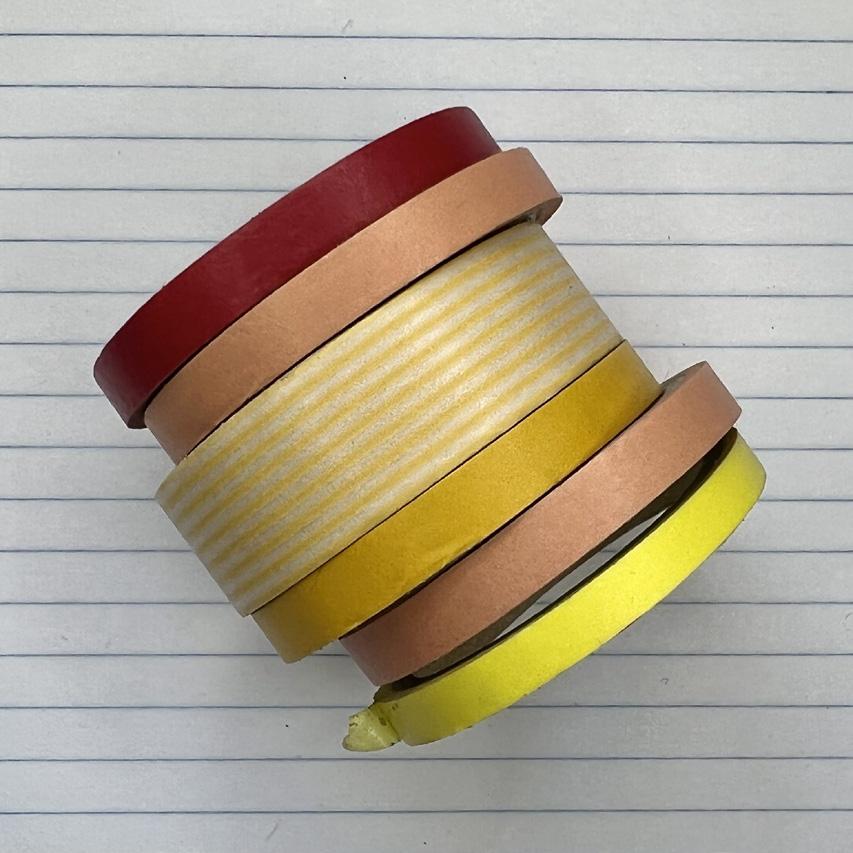San Jose State University
Department of Design
Instructor: Prof. Yoon Chung Han
Section 06 Fall 2022
DSGD 100 Section 06 Visual Communication and Process
Bridgitte ChanContent
Project 1
Object, Form, and Representation
Project 2
Project 3
Informational Poster
Three-Dimensional Translation
Interactive Experience



























































Planning to draw something like this in pencil








YOUR GUIDE TO USING MATCHES
Matches are a wooden or cardboard stick with an end cap, called a ‘head’, that ignites under friction. The heads of matches are commonly made of phosphorus sesquisulfide, potassium chlorate, or antimony (III) sulphide. Surfaces made for match striking typically contain red phosphorus, glass crystals, carbon black, a binder and a neutraliser.


HOW DO THEY WORK?
The friction from stiking the match against a surface breaks the red phosphorous chain, this allows the white phosphorous to react with oxygen and the match starts to get hot. The match now needs fuel and oxygen to continue to burn. The fuel comes from the sulfur and wax in the head of the match, as well as the wood in the matchstick. Stored inside the match head is another chemical called “potassium chlorate” and when it gets hot, it releases a lot of extra oxygen and heat. This makes the match head burn quickly and strongly.

THE HISTORY
Jean Chancel of Paris, France, invented a variety of matches in the early 1800s. However, most were not safe or economical.
Simple matches originated from China around the mid 950s as sulphur-dipped wooden sticks, although they were possibly used a few hundred years earlier.


The first practical match which could light through friction was invented by an English chemist, John Walker, in 1826. From there, improvements were made by Charles Sauria of France in 1830.
A striking surface especially made for matches was invented in Sweden by Gustaf Pasch in 1844. This was the beginning of the ‘safety’ version. The safety match was popularized by Swedish industrialist and inventor John Edvard Lundström. He was the first to begin mass production of this type of matches.




























































MATCHSTICK MANIA





GAME OVERVIEW:


The objective? Get to the finish line first by completing the tasks on the STRIKE IT! cards. Getting started is easy, simply place the cards on the desginated area and play smarter, not harder. Good luck!



HOW TO PLAY: 1 2 3 4 5
Each person places their pawn on the starting position and rolls the die. The person who rolls the highest number will go first, the lowest number will go last.


The first player begins by picking up an action card, known as a STRIKE IT! card, and following the instructions on the card.
When you finish the task, place the STRIKE IT! card into a separate, “used” pile–regardless of whether or not the action was successfully completed.
The next player follows suit. Take turns repeating these steps and completing the actions.
If you run out of STRIKE IT! cards, grab the used pile, shuffle them, and place the cards back in to their original position.

Continue playing until someone reaches the finish line. The first person to finish, wins! Have a good match!
WHAT’S INCLUDED:
WHAT YOU NEED:

MATCHSTICK MANIA





GAME OVERVIEW:


The objective? Get to the finish line first by completing the tasks on the STRIKE IT! cards. Getting started is easy, simply place the cards on the desginated area and play smarter, not harder. Good luck!



HOW TO PLAY: 1 2 3 4 5
Each person places their pawn on the starting position and rolls the die. The person who rolls the highest number will go first, the lowest number will go last.


The first player begins by picking up an action card, known as a STRIKE IT! card, and following the instructions on the card.
When you finish the task, place the STRIKE IT! card into a separate, “used” pile–regardless of whether or not the action was successfully completed.
The next player follows suit. Take turns repeating these steps and completing the actions.
If you run out of STRIKE IT! cards, grab the used pile, shuffle them, and place the cards back in to their original position.

Continue playing until someone reaches the finish line. The first person to finish, wins! Have a good match!
WHAT’S INCLUDED:
WHAT YOU NEED:
THE RULE BOOK

